8.The Adaptive Allure of Canopy Tents:
In conclusion, the canopy tent stands as a testament to adaptability and functionality in the realm of outdoor shelters. Its peaked roof, open sides, and expandable metal frame make it a visual standout, while alternative names and cross-cultural terminology add layers of diversity to its identity. Whether referred to as a “pop-up canopy,” “canopy tent,” or “gazebo,” these structures continue to be embraced worldwide for their versatility and ease of use in creating temporary, sheltered spaces in the great outdoors.

What is the purpose of weight bags for canopy tents?
1.Introduction:
When it comes to setting up a canopy tent, stability is paramount, especially in the face of unpredictable weather conditions. Weight bags for canopy tents emerge as essential accessories designed to fortify and anchor these temporary shelters. In this article, we explore the purpose of weight bags, understanding how they contribute to the resilience and durability of canopy tents.
2.Enhancing Stability in Adverse Conditions:
The primary purpose of weight bags for canopy tents is to enhance stability, particularly in adverse weather conditions. Whether facing gusty winds, unexpected storms, or other environmental challenges, weight bags serve as anchors, preventing the canopy from being swayed or lifted.
3.Versatility in Fill Materials:
Weight bags are versatile accessories that can be filled with a range of materials, including sand, rocks, snow, or any other available substance nearby. This adaptability ensures that campers and event organizers can utilize locally sourced materials to add weight to the bags, making them practical and accessible in various settings.
4.Protection Against Tent Damage:
The presence of weight bags significantly reduces the risk of tent damage during storms or windy days. By adding substantial weight to the base of the canopy, these bags counterbalance external forces, preventing the tent from shifting, tilting, or sustaining structural damage. This protective function is particularly crucial for maintaining the integrity of the tent fabric and frame.
5.Heavy Duty Sand Bags:
Weight bags designed for canopy tents often come in the form of heavy-duty sand bags. These bags are specifically crafted to withstand the elements and provide reliable stability. The heavy-duty construction ensures that they can endure the rigors of outdoor use and effectively perform their anchoring role.
6.Fill Capacity for Optimal Stability:
The weight capacity of each bag is a crucial aspect of its effectiveness. In the case of heavy-duty sand bags, the recommended weight capacity is approximately 30-35 pounds when fully filled with sand. This optimal fill capacity ensures that the bags provide sufficient counterweight to secure the canopy tent in various weather conditions.
7.Ease of Filling and Emptying:
Weight bags are designed with user convenience in mind. The ease of filling and emptying these bags adds to their practicality. Campers can quickly fill the bags with the desired material, and when it’s time to pack up, emptying them becomes a hassle-free task, contributing to the overall efficiency of the camping or event setup process.
8.Portable and Space-Efficient:
Despite their crucial role in stabilizing canopy tents, weight bags remain portable and space-efficient. Their compact design allows for easy transportation, making them an essential accessory for campers, vendors, and event organizers who frequently move from one location to another.
9.Multipurpose Use:
Beyond their role in stabilizing canopy tents, weight bags have a multipurpose use. Their adaptability in filling materials and portable nature make them suitable for various outdoor activities. Whether securing pop-up canopies at outdoor markets, festivals, or camping sites, weight bags prove to be versatile tools for ensuring stability.
10.Conclusion:
In conclusion, weight bags for canopy tents play a pivotal role in enhancing stability and protecting temporary shelters from the forces of nature. With the ability to be filled with sand, rocks, snow, or other available materials, these heavy-duty sand bags offer a practical solution for fortifying canopy tents in diverse settings. Whether facing stormy weather or setting up a market stall, the purposeful use of weight bags ensures that canopy tents stand firm, providing a secure and reliable shelter for various outdoor activities.
What are the key features to look for in a waterproof 10×10 canopy with sides?
When choosing a waterproof 10×10 canopy with sides, several key features contribute to its overall functionality and effectiveness. Here are essential features to consider:
1.Waterproof Material:
Ensure that the canopy material is explicitly designed to be waterproof. Look for canopies made from water-resistant or waterproof materials such as polyester or polyethylene. Coatings like PU (polyurethane) or PVC (polyvinyl chloride) can enhance water repellency.
2.Sealed Seams:
Check if the seams of the canopy are sealed. Sealed seams prevent water from seeping through the stitching, ensuring that the entire canopy, including the sides, provides reliable waterproofing.
3.Quality Zippers and Closures:
The zippers and closures on the sidewalls should be of high quality and designed to resist water. Look for water-resistant or waterproof zippers to prevent leaks at closure points.
4.Sidewall Attachments:
Assess how the sidewalls attach to the canopy frame. A secure attachment system ensures that there are no gaps or openings where water could penetrate. Features like hook-and-loop fasteners or sturdy clips contribute to a tight and waterproof fit.
5.Ventilation Options:
While waterproofing is essential, good ventilation is crucial for comfort inside the canopy. Look for canopies with sidewalls that have ventilation options such as mesh windows or vents. This helps prevent condensation inside the canopy.
6.Frame Durability:
The frame of the canopy should be sturdy and durable, capable of withstanding various weather conditions. A robust frame not only enhances the overall stability of the canopy but also ensures that the canopy remains waterproof even during windy or adverse weather.
7.Adjustable Height Settings:
Some canopies come with adjustable height settings. This feature allows you to customize the canopy’s height based on your needs and can also be useful for water runoff during rain.
8.UV Protection:
In addition to being waterproof, consider a canopy that offers UV protection. The material should have a UPF (Ultraviolet Protection Factor) rating to shield occupants from harmful UV rays, providing a comprehensive outdoor shelter solution.
9.Easy Setup and Takedown:
Look for a canopy with a user-friendly design that allows for easy setup and takedown. Features like telescoping legs, intuitive locking mechanisms, and a straightforward assembly process contribute to a hassle-free experience, especially in adverse weather conditions.
10.Portability and Storage:
Consider the portability and storage options of the canopy. A compact and lightweight design, along with a carry bag, makes transportation and storage more convenient, allowing you to take the canopy with you wherever needed.
By considering these key features, you can select a waterproof 10×10 canopy with sides that not only provides effective protection against rain but also offers durability, convenience, and comfort for various outdoor activities.
What are the key features to consider when choosing a 10×10 vendor tent for outdoor events?
Choosing the right 10×10 vendor tent for outdoor events involves considering various key features to ensure functionality, durability, and overall suitability for your specific needs. Here are essential features to consider:
1.Material Quality:
Investigate the material used for both the canopy and the frame. High-quality, durable materials such as polyester or polyethylene for the canopy and rust-resistant, powder-coated steel or aluminum for the frame contribute to the tent’s overall longevity.
2.Weather Resistance:
Assess the tent’s ability to withstand different weather conditions. Look for features such as water-resistant or waterproof materials, UV protection, and reinforced seams to ensure the tent can handle rain, sun, and wind.
3.Frame Construction:
Consider the frame construction, as it plays a crucial role in the tent’s stability. Opt for sturdy frames with a reliable locking mechanism, reinforced joints, and adjustable height settings. This ensures the tent remains stable in varying outdoor environments.
4.Ease of Setup:
Look for a vendor tent with a user-friendly design that facilitates easy setup and takedown. Features like telescoping legs, push-button sliders, and a straightforward assembly process contribute to efficient use, especially during events with tight schedules.
5.Portability and Transport:
Evaluate the tent’s portability, especially if you anticipate frequent transportation. A compact design, lightweight materials, and a convenient carry bag can make it easier to transport the tent to different event locations.
6.Customization Options:
Consider whether the vendor tent offers customization options, such as the ability to add logos, branding, or personalized graphics. Customization can enhance visibility and help promote your business or products effectively.
7.Sidewalls and Accessories:
Determine if the vendor tent comes with sidewalls or if they are available as accessories. Sidewalls offer added protection against wind, rain, and sun, creating a more enclosed and comfortable space for vendors. Accessories like weight bags, stake kits, and lighting options can also enhance functionality.
8.Ventilation Features:
Check for ventilation features that contribute to the comfort of vendors inside the tent. Mesh panels, windows, or vents help improve airflow, reducing the risk of condensation and ensuring a pleasant environment, especially during warm weather.
9.Compliance with Regulations:
Ensure that the vendor tent complies with any local regulations or event guidelines. Some events may have specific requirements regarding tent sizes, colors, or fire safety features, so it’s essential to choose a tent that meets these standards.
10.Warranty and Customer Support:
Look for a vendor tent backed by a warranty, as this indicates the manufacturer’s confidence in the product’s quality. Additionally, consider the availability of customer support in case you have questions or encounter issues with the tent.
By carefully considering these key features, you can select a 10×10 vendor tent that not only meets your immediate needs for outdoor events but also provides a reliable and durable solution for your business or promotional activities.
Can vendor tents be used for both commercial and recreational purposes, and are there specific models designed for different applications?
vendor tents can indeed be used for both commercial and recreational purposes. These versatile shelters are designed to serve various needs, and manufacturers often produce different models tailored for specific applications. Here’s an overview of how vendor tents can be used for both commercial and recreational purposes, along with considerations for different models:
Commercial Use:
1.Vendor Booths at Events:
Vendor tents are commonly used for commercial purposes at events such as trade shows, farmers’ markets, craft fairs, and outdoor festivals. They provide businesses with a dedicated space to showcase and sell products.
2.Promotional Activities:
Companies often use vendor tents for promotional activities, including product launches, brand promotions, and marketing campaigns. Customizable canopies allow for branding and logo displays, enhancing visibility.
3.Outdoor Retail:
Retailers frequently use vendor tents for temporary outdoor retail spaces. These tents offer a quick and efficient solution for setting up a pop-up shop, allowing businesses to reach customers in various locations.
4.Food Vendors and Catering:
Vendor tents are popular among food vendors and catering services. They provide a sheltered space for preparing and serving food at outdoor events, ensuring a comfortable environment for both vendors and customers.
Recreational Use:
1.Camping and Outdoor Activities:
Compact and portable vendor tents are suitable for recreational use, including camping and outdoor activities. They offer shelter from the elements and can be easily set up for a quick camping experience.
2.Tailgating Events:
Families and sports enthusiasts use vendor tents for tailgating events before games. These tents provide shade, protection, and a communal space for socializing and enjoying pre-game festivities.
3.Picnics and Beach Trips:
Vendor tents with lightweight frames and easy setup are ideal for recreational outings such as picnics or beach trips. They offer shade and a comfortable area for relaxation during outdoor leisure activities.
4.Community Events and Gatherings:
For community events, reunions, or neighborhood gatherings, vendor tents can serve as a central point for activities. They provide shade, shelter, and a defined space for socializing.
Considerations for Different Models:
1.Commercial Models:
Commercial vendor tents often feature heavy-duty frames, high-quality materials, and customizable canopies for branding. They may have additional accessories like sidewalls, counters, and lighting for business-specific needs.
2.Recreational Models:
Recreational vendor tents are designed with ease of use and portability in mind. They typically have lightweight frames, straightforward assembly processes, and may prioritize features like ventilation and compact storage.
3.Hybrid Models:
Some vendor tents are designed to meet both commercial and recreational needs. These hybrid models aim to offer a balance between durability, functionality, and ease of use, making them versatile for various applications.
Ultimately, the choice between commercial and recreational vendor tents depends on your specific requirements. Consider factors such as intended use, frequency of use, customization needs, and desired features to select the most suitable model for your purposes.
What size options are available for vending tents, and how do I determine the most suitable size for my specific vending needs?
Vending tents come in various size options to cater to different needs and preferences. The size you choose depends on factors such as the nature of your vending business, the amount of merchandise you plan to display, and the space available at your vending locations. Here are common size options and considerations for determining the most suitable size for your specific vending needs:
Common Size Options:
1.10×10 Vending Tents:
- Standard size for many vendors.
- Offers a compact footprint suitable for smaller events or limited spaces.
- Easy to transport and set up, making it a popular choice.
2.10×15 Vending Tents:
- Provides additional space compared to a 10×10 tent.
- Suitable for vendors with a moderate amount of merchandise.
- Offers a bit more room for displays and customer interactions.
3.10×20 Vending Tents:
- Larger footprint for vendors with a significant amount of merchandise.
- Ideal for events where a more extensive display area is required.
- Offers flexibility in arranging and organizing products.
Considerations for Size Determination:
1.Nature of Business:
Consider the type of products or services you offer. If you have a diverse range of merchandise, a larger tent may be necessary for effective display.
2.Display Requirements:
Evaluate the space needed for your display. If you have larger items or require multiple tables, a larger tent may be more suitable.
3.Event Size and Location:
Consider the venues where you typically set up your vending tent. If you frequently participate in smaller events, a 10×10 tent may suffice, while larger events may warrant a larger size.
4.Budget Constraints:
Larger tents generally come with higher costs. Consider your budget and find a balance between size and affordability.
5.Transportation and Setup:
Assess your ability to transport and set up different tent sizes. Larger tents may require more effort and resources for transportation and assembly.
6.Regulations and Space Allocation:
Check event regulations and space allocations. Some events may have specific size requirements for vendor tents.
7.Future Growth:
Plan for future growth. If you anticipate expanding your product line or business, choosing a slightly larger tent than your current needs may provide room for growth.
8.Brand Visibility:
Consider the visibility of your brand. A larger tent may offer more surface area for branding and promotional materials.
9.Customer Interaction:
Evaluate the need for customer interaction space. If you engage with customers inside the tent, a larger size allows for a more comfortable and inviting space.
10.Weather Considerations:
Factor in the weather conditions of your typical vending locations. A larger tent may provide more significant shelter in case of rain or harsh sunlight.
By carefully considering these factors, you can determine the most suitable size for your vending needs, ensuring that your tent effectively showcases your products and enhances your overall vending experience.

How can vendors customize their vending tents to enhance brand visibility and promotional efforts?
Customizing vending tents is a powerful way for vendors to enhance brand visibility and boost promotional efforts. Here are various ways vendors can personalize their tents to leave a lasting impression on customers:
1.Custom Printed Canopies:
Design and print a custom canopy with the vendor’s logo, brand colors, and any relevant imagery.
Use high-quality printing techniques to ensure vibrant and durable graphics.
2.Branded Sidewalls:
Consider adding sidewalls with the vendor’s logo, tagline, or additional branding elements.
Sidewalls offer additional space for promotional messages and create a more enclosed and visually appealing setup.
3.Table Covers and Runners:
Customize table covers or runners with the brand’s logo and colors.
Coordinated table displays contribute to a cohesive and professional look.
4.Flag Banners:
Incorporate flag banners with the brand’s logo or promotional messages to attract attention from a distance.
Flags add vertical elements that can increase visibility in crowded event spaces.
5.Promotional Signage:
Use signage to highlight promotions, discounts, or key product features.
Clear, concise messaging on signage can quickly convey information to passersby.
6.Branded Merchandise Displays:
Incorporate branded display racks, shelves, or stands to showcase merchandise.
Ensure that the overall display aligns with the brand aesthetic.
7.Lighting Elements:
Integrate custom lighting elements to illuminate the tent and draw attention.
LED lights can be strategically placed to highlight specific areas, creating a visually appealing setup.
8.Interactive Elements:
Consider interactive elements such as digital screens or tablets displaying promotional videos, social media feeds, or product demonstrations.
Interactive displays engage customers and leave a memorable impression.
9.Flooring and Mats:
Use branded flooring or mats with the company logo.
This adds a professional touch and reinforces brand imagery.
10.Social Media Integration:
Display social media handles, hashtags, and QR codes on the tent.
Encourage customers to engage with the brand online, extending the reach beyond the physical event.
11.Branded Staff Apparel:
Ensure that staff members wear branded apparel, such as custom uniforms or shirts with the company logo.
A cohesive and branded team contributes to a professional and unified image.
12.Interactive Giveaways:
Offer branded promotional items as giveaways or incentives.
Items like branded tote bags, pens, or stickers can serve as walking advertisements.
13.Themed Decor:
Create a themed decor that aligns with the brand’s identity.
Consistent thematic elements enhance the overall visual appeal of the vending space.
14.Testimonials and Reviews:
Display positive customer testimonials or reviews on the tent.
This builds trust and credibility, encouraging potential customers to explore the offerings.
By incorporating these customization strategies, vendors can transform their vending tents into impactful marketing tools, effectively conveying their brand message and creating a memorable experience for customers.

How stable are transparent igloo tents in windy conditions, and are there measures to enhance their resistance to gusts of wind?
The stability of transparent igloo tents in windy conditions can vary depending on factors such as design, construction, and additional features. Here are considerations regarding the stability of transparent igloo tents and measures to enhance their resistance to gusts of wind:
1.Structural Design:
The overall design of the igloo tent can impact its stability. A well-engineered structure with reinforced elements may provide better resistance to wind.
2.Frame Material:
The material used for the frame, whether it’s lightweight aluminum or sturdy steel, influences the tent’s ability to withstand wind forces.
3.Anchoring Systems:
Implementing robust anchoring systems, such as stakes or weighted anchors, helps secure the tent to the ground and prevents it from being lifted by strong winds.
4.Wind Ratings:
Check the manufacturer’s specifications for wind ratings. Transparent igloo tents designed for outdoor use often come with wind resistance ratings that indicate the maximum wind speed they can withstand.
5.Ventilation Design:
A well-designed ventilation system can help reduce wind resistance by allowing air to flow through the tent, minimizing the forces acting on its surfaces.
6.Dome Shape:
The dome shape of igloo tents can contribute to better wind deflection. The rounded design is aerodynamic and can potentially reduce wind drag.
7.Weatherproofing Features:
Tents with weatherproof features, such as reinforced seams and zippers, can better withstand the elements, including windy conditions.
8.Sidewall Usage:
Consider using sidewalls strategically. While transparent tents offer a view, adding sidewalls during windy conditions can create a more enclosed structure, reducing wind exposure.
9.Regular Inspection:
Regularly inspect the tent for wear and tear, and promptly address any damage or weak points. This proactive approach helps maintain the tent’s overall stability.
10.Professional Setup:
Ensure that the tent is set up professionally according to the manufacturer’s guidelines. Proper installation, including tensioning the fabric and securing anchors, is critical for stability.
It’s essential to note that while these measures can enhance the stability of transparent igloo tents in windy conditions, extreme weather situations may still pose a challenge. It’s advisable to monitor weather forecasts and take precautions, such as disassembling the tent in severe conditions, to prevent potential damage.
How well does a 10 by 10 tent withstand frequent use and exposure to various weather conditions, ensuring it remains in good condition over the long term?
The longevity and condition of a 10×10 tent over the long term depend on various factors, including the quality of materials, construction, maintenance, and exposure to weather conditions. Here are key considerations to assess how well a 10×10 tent can withstand frequent use and exposure:
1.Material Quality:
High-quality materials, such as durable fabrics for the canopy and robust frames (aluminum or steel), contribute to the overall durability of the tent.
2.Frame Strength:
The strength and construction of the frame are crucial. Sturdy frames with proper reinforcement enhance the tent’s ability to endure frequent use and resist stress from wind or other elements.
3.Water Resistance:
Effective water resistance features, including waterproof materials and sealed seams, protect the tent from rain and moisture. Regularly applying waterproofing treatments can enhance and prolong this protection.
4.UV Protection:
UV-resistant materials safeguard the tent from sun damage, preventing color fading and material deterioration over time. UV protection is particularly important for tents exposed to prolonged sunlight.
5.Ventilation Design:
Adequate ventilation helps regulate the temperature inside the tent, reducing the risk of condensation and maintaining a healthier environment. Proper ventilation contributes to the tent’s overall durability.
6.Seam Quality:
Strong and well-sealed seams are essential for preventing water infiltration. Quality stitching and seam sealing contribute to the overall integrity of the tent.
7.Setup and Takedown Practices:
Following the manufacturer’s guidelines for proper setup and takedown is crucial. Incorrect assembly or disassembly can lead to wear and tear, affecting the tent’s structural stability.
8.Storage Conditions:
Proper storage when the tent is not in use is essential. Storing the tent in a cool, dry place and avoiding prolonged exposure to direct sunlight helps prevent material degradation and damage.
9.Regular Maintenance:
Performing routine maintenance checks, including inspections for tears, wear, and loose components, allows for timely repairs. Addressing minor issues promptly can prevent them from becoming more significant problems.
10.Wind Resistance:
A tent designed with wind-resistant features, such as sturdy anchors, guy lines, and reinforced corners, is more likely to withstand windy conditions without sustaining damage.
11.Intended Use and Conditions:
Consider the tent’s intended use and the conditions it will face. Some tents are designed for specific seasons or weather conditions, so choosing a tent that aligns with your needs contributes to its long-term durability.
12.Brand Reputation:
The reputation of the tent manufacturer matters. Choosing a tent from a reputable brand known for producing quality outdoor equipment increases the likelihood of a durable and reliable product.
By considering these factors and adopting proper care practices, a well-constructed 10×10 tent can remain in good condition over the long term, providing reliable shelter for various outdoor activities and events.
What are the advantages of a tent with an inflatable floor?
Tents with inflatable floors offer several advantages that cater to the needs and preferences of campers. Here are some key benefits:
1.Comfort:
Inflatable floors provide a more comfortable sleeping surface compared to traditional tent floors, especially on uneven or rocky terrain.
2.Insulation:
The air in the inflatable floor acts as a natural insulator, providing better temperature regulation inside the tent.
3.Easy Setup:
Inflatable floors are generally quick and easy to set up, often requiring less time and effort than assembling a tent with a traditional pole system.
4.Packability:
Inflatable floors can be deflated, making the tent more compact and easier to pack, especially for backpackers or those with limited storage space.
5.Weight:
In some cases, tents with inflatable floors may be lighter than traditional tents with heavy pole systems, making them more suitable for lightweight camping.
6.Puncture Resistance:
Many inflatable floors are designed to be puncture-resistant, reducing the risk of damage from sharp objects on the ground.
7.Adaptability:
Tents with inflatable floors can conform to the shape of the ground, allowing for more flexibility in choosing a campsite.
8.Shock Absorption:
The air-filled chambers in the inflatable floor can absorb shocks and vibrations, providing a softer surface for sleeping.
9.Improved Stability:
Some designs include multiple air chambers, distributing weight more evenly and enhancing the stability of the tent.
10.Ease of Repairs:
Repairing a puncture in an inflatable floor is often simpler than fixing a damaged traditional tent floor, and patch kits are commonly available.
11.Innovative Designs:
Inflatable floors often come with innovative tent designs, offering unique shapes and configurations that might not be possible with traditional poles.
12.Water Resistance:
The air-filled chambers can provide an added layer of protection against ground moisture, enhancing the tent’s water resistance.
13.Versatility:
Tents with inflatable floors are versatile and suitable for various camping conditions, including backpacking, car camping, and even some extreme weather situations.
14.Reduced Condensation:
The airflow beneath the inflatable floor can help reduce condensation inside the tent.
15.User-Friendly:
Inflatable tents are user-friendly, and many come with built-in pumps or easy-to-use valve systems for inflation.
While tents with inflatable floors have numerous advantages, it’s important to consider individual preferences, specific camping needs, and potential drawbacks before choosing the right tent for a particular trip.
What material is commonly used for tent replacement bags, and how does it contribute to durability?
Tent replacement bags are typically made from durable materials that provide protection for the tent during storage and transport. Common materials used for these bags include:
1.Nylon:
Nylon is a popular choice for tent replacement bags due to its lightweight nature, abrasion resistance, and durability. It is also known for its water-resistant properties, helping to protect the tent from moisture during storage.
2.Polyester:
Polyester is another common material used in replacement bags. It is resistant to UV rays, mildew, and abrasion, contributing to the overall durability of the bag. Polyester is also known for its color retention and resistance to shrinking or stretching.
3.Oxford Fabric:
Oxford fabric is a type of woven textile known for its strength and durability. It is often used in replacement bags to provide a robust and tear-resistant outer layer, offering protection against wear and tear.
4.Canvas:
While less common for replacement bags due to its heavier weight, canvas is a durable and sturdy option. It is known for its breathability and resistance to abrasion, making it suitable for protecting tents during storage.
5.Ripstop Fabric:
Replacement bags may feature ripstop fabric, which incorporates a special reinforcing technique to resist tearing and prevent small punctures from developing into larger holes. This adds an extra layer of durability to the bag.
The choice of material contributes to the durability of the replacement bag in several ways:
6.Tear Resistance:
Durable materials like nylon, polyester, and ripstop fabric are resistant to tears, ensuring that the bag can withstand rough handling and potential snags.
7.Abrasion Resistance:
The materials used are often resistant to abrasion, protecting the bag from wear and damage caused by friction during storage or transport.
8.Weather Resistance:
Many replacement bags are designed to be water-resistant or waterproof, protecting the tent from rain and moisture during storage and transport.
9.UV Resistance:
UV-resistant materials, such as polyester, help prevent the degradation of the replacement bag’s fabric when exposed to sunlight over time.
When choosing a replacement bag, it’s essential to consider the specific needs of the tent, the conditions it will be exposed to, and the desired level of protection for long-term durability.




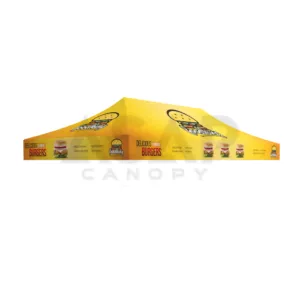
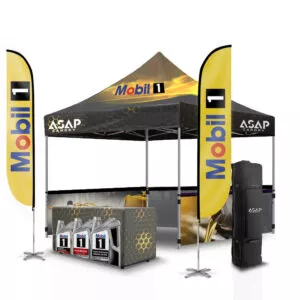


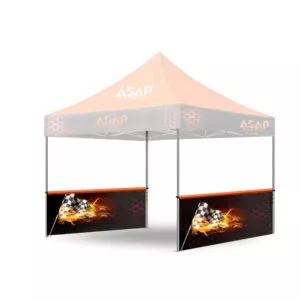
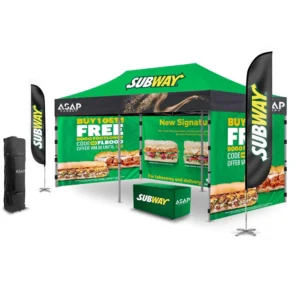

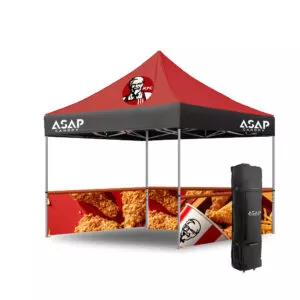
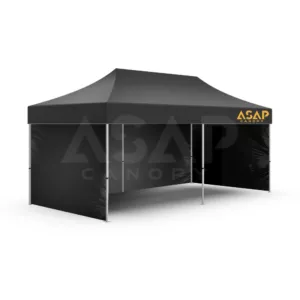



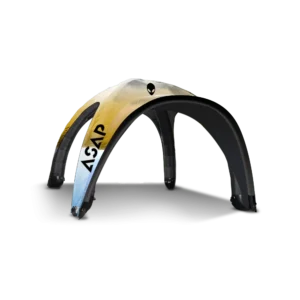

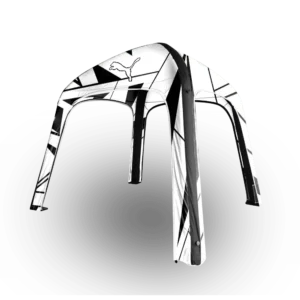



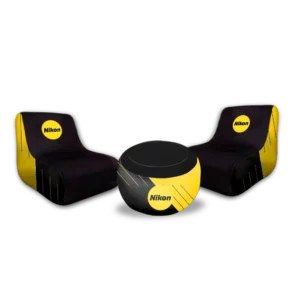




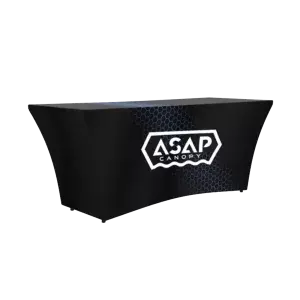

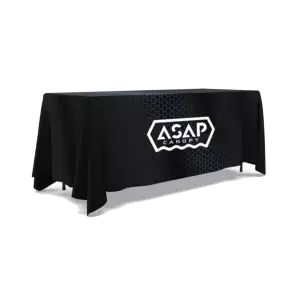





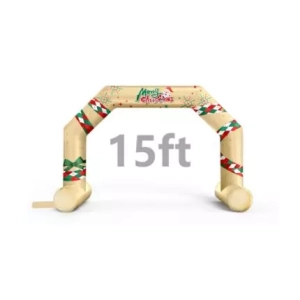





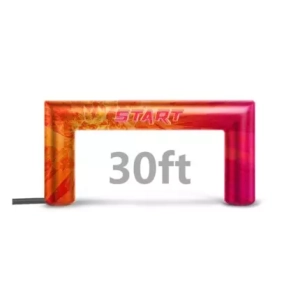





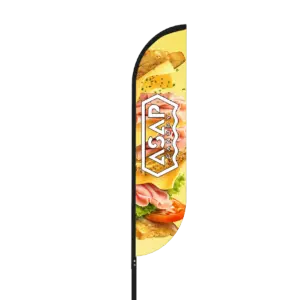


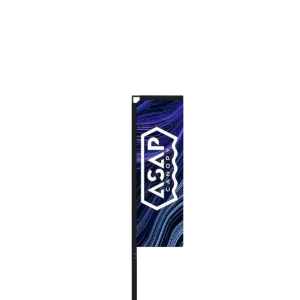

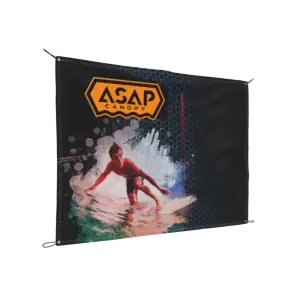
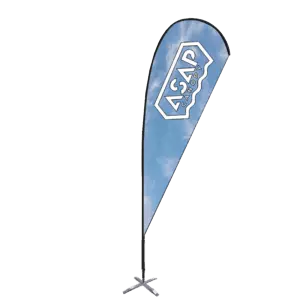

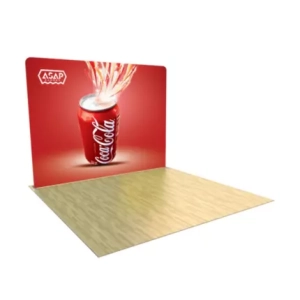

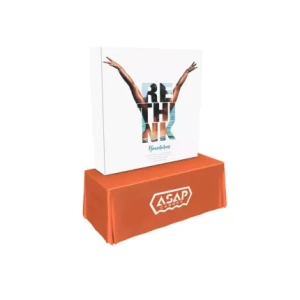
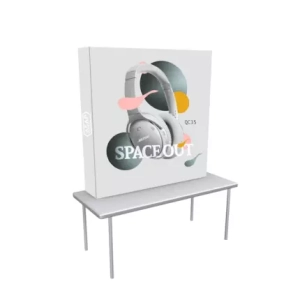
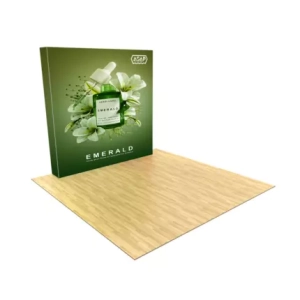


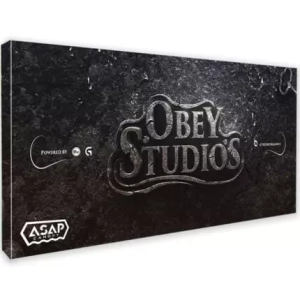
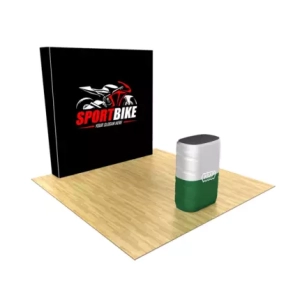


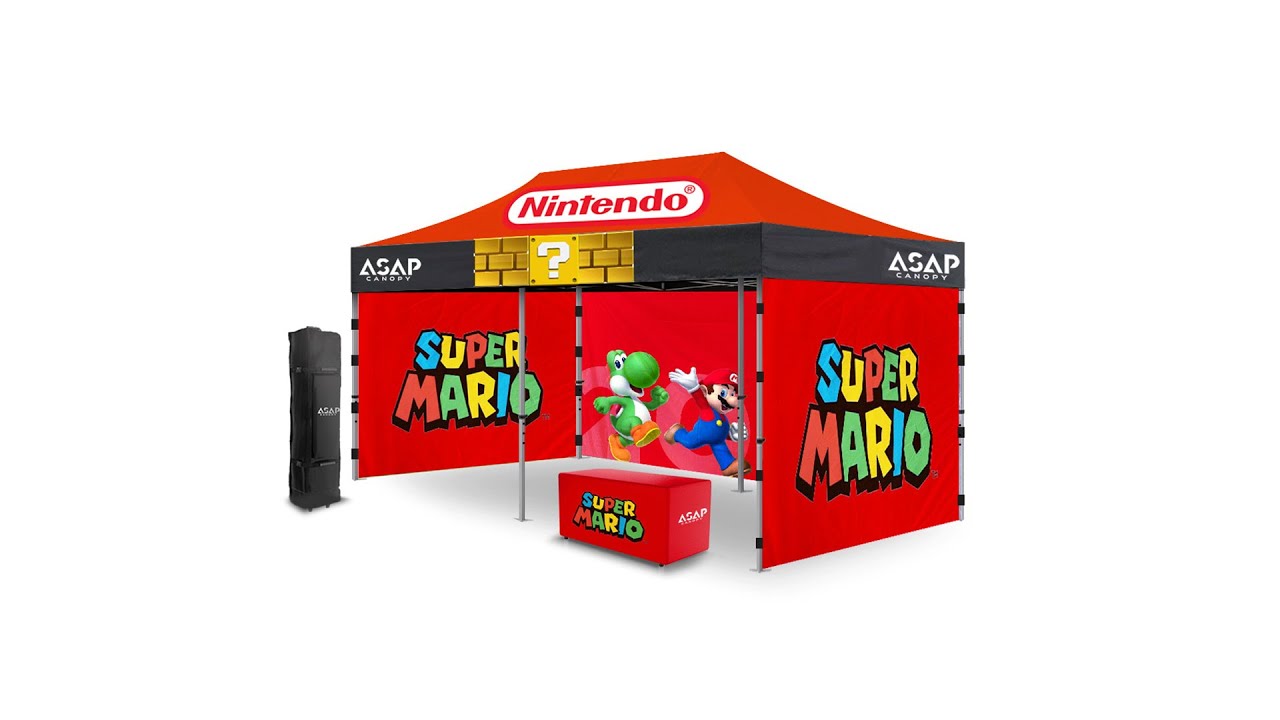



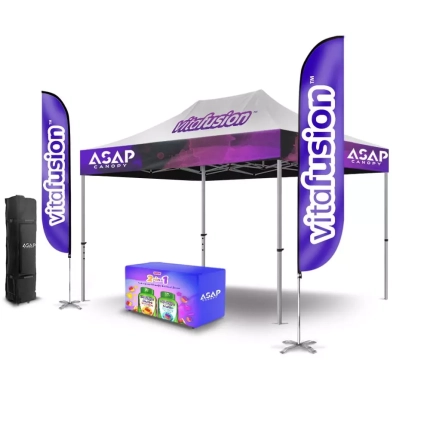




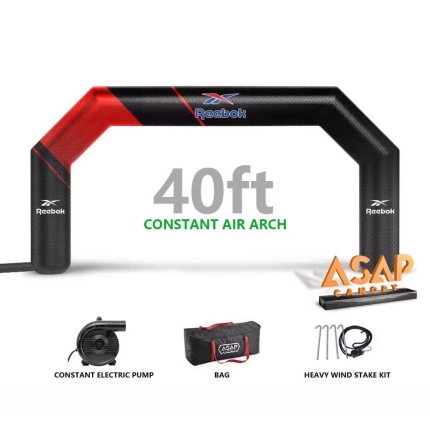

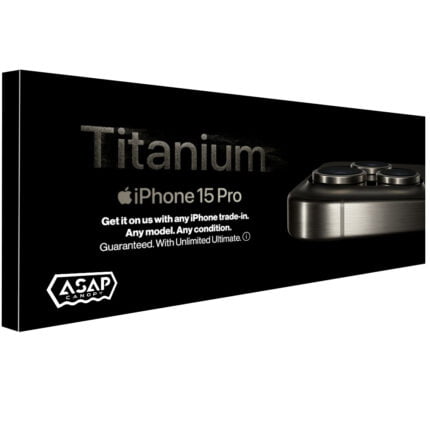


 5×5 Pop Up Tent
5×5 Pop Up Tent 6.5×6.5 Pop Up Tent
6.5×6.5 Pop Up Tent 10×10 Canopy Tent
10×10 Canopy Tent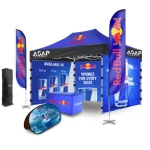 10×15 Canopy Tent
10×15 Canopy Tent 10×20 Canopy Tent
10×20 Canopy Tent Canopy Options
Canopy Options Blank Canopy Top
Blank Canopy Top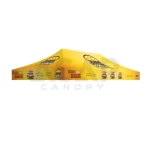 Canopy Top
Canopy Top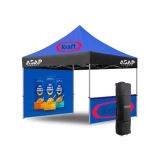 Canopy Walls
Canopy Walls Canopy Side Skirt
Canopy Side Skirt Blank Canopy
Blank Canopy Blank Canopy Kit
Blank Canopy Kit
 Inflatable Canopy Tents 10×10
Inflatable Canopy Tents 10×10 Inflatable Canopy Tents 13×13
Inflatable Canopy Tents 13×13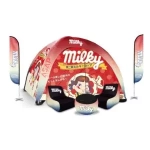 Inflatable Canopy Tents 16×16
Inflatable Canopy Tents 16×16 Inflatable Canopy Tents 20×20
Inflatable Canopy Tents 20×20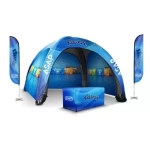 Inflatable Canopy Tents 23×23
Inflatable Canopy Tents 23×23 Inflatable Canopy Tents 26×26
Inflatable Canopy Tents 26×26 Inflatable Spider Tents
Inflatable Spider Tents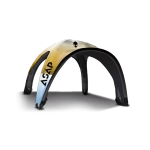 Inflatable Dome Tents
Inflatable Dome Tents Inflatable Eclipse Tents
Inflatable Eclipse Tents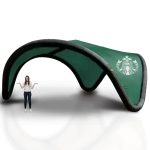 Inflatable Party Tent
Inflatable Party Tent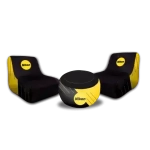 Inflatable Furniture
Inflatable Furniture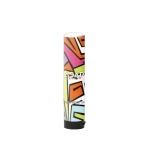 Inflatable Pillar
Inflatable Pillar
 Single Pole Star Tents
Single Pole Star Tents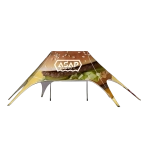 Double Pole Star Tents
Double Pole Star Tents
 15FT Inflatable Arches
15FT Inflatable Arches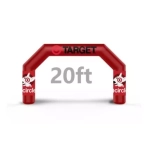 20FT Inflatable Arches
20FT Inflatable Arches 25FT Inflatable Arches
25FT Inflatable Arches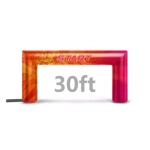 30FT Inflatable Arches
30FT Inflatable Arches 40FT Inflatable Arches
40FT Inflatable Arches 50FT Inflatable Arches
50FT Inflatable Arches Custom Constant Arches
Custom Constant Arches Custom Sealed Arches
Custom Sealed Arches
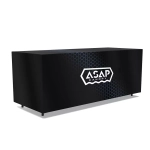 Fitted Table Covers
Fitted Table Covers Stretch-Fit Table Covers
Stretch-Fit Table Covers Loose Table Throws
Loose Table Throws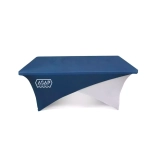 Cross-Over Stretch-Fit Table Cover
Cross-Over Stretch-Fit Table Cover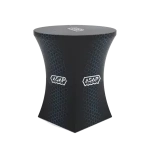 Round Stretch-Fit Table Cover
Round Stretch-Fit Table Cover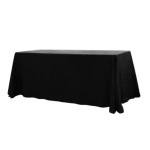 Blank Table Throws
Blank Table Throws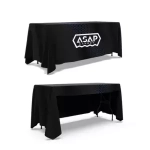 3-Sided Loose Table Throw
3-Sided Loose Table Throw Round Fitted Table Covers
Round Fitted Table Covers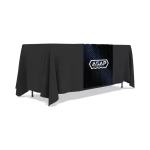 Table Runners
Table Runners Square Table Covers
Square Table Covers
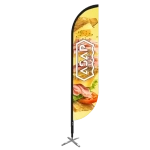 Feather Flags
Feather Flags Blade Flags
Blade Flags Feather Banner
Feather Banner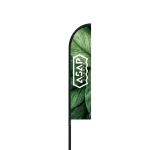 Blade Banner
Blade Banner Teardrop Flags
Teardrop Flags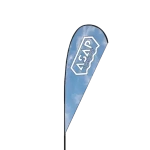 Teardrop Banner
Teardrop Banner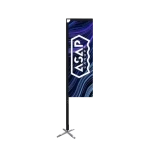 Rectangle Flags
Rectangle Flags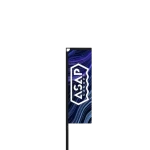 Rectangle Banner
Rectangle Banner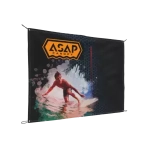 Mesh Event Banners
Mesh Event Banners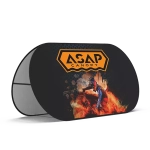 Pop Out Banner Horizontal
Pop Out Banner Horizontal Pop-Out Banner Vertical
Pop-Out Banner Vertical
 Trade Show Display
Trade Show Display Trade Show Display Kit
Trade Show Display Kit Pop Up Trade Show Display
Pop Up Trade Show Display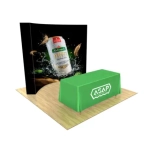 Pop Up Trade Show Display Deluxe Kit
Pop Up Trade Show Display Deluxe Kit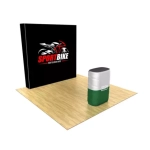 Pop Up Trade Show Display Kit
Pop Up Trade Show Display Kit TableTop Displays Kit
TableTop Displays Kit Pop Up Tabletop Display Kit
Pop Up Tabletop Display Kit Pop Up Tabletop Display
Pop Up Tabletop Display Tabletop Display
Tabletop Display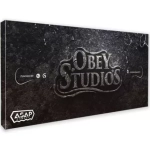 Straight Trade Show Exhibit Booth
Straight Trade Show Exhibit Booth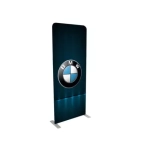 Banner Stand
Banner Stand
 Tent Accessories
Tent Accessories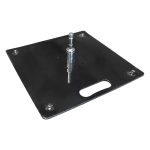 Flag Accessories
Flag Accessories Arch Accessories
Arch Accessories Trade Show Accessories
Trade Show Accessories
